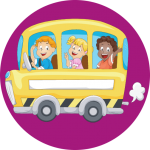Choosing a preschool program is one of the first major educational decisions a parent makes—and it’s one that sets the tone for a child’s early development. Many families find themselves at a crossroads, trying to determine whether part-time preschool or full-time preschool is the right path. While the distinction may appear to be just a matter of hours or cost, the implications stretch much further. From emotional development and academic preparedness to family scheduling and budget, the decision is multi-layered.
At Discovery Time Learning Center, we’ve worked with countless families navigating this very question. Drawing from years of experience, we’ve created a comprehensive framework to help you evaluate which program is best suited for your child and your family’s goals.
Understanding your options fully means taking a deeper look at how preschool structure impacts childhood development, day-to-day family life, and long-term learning outcomes.
Preschool Structure and Daily Rhythm
Part-time preschool typically involves attendance for a few hours per day, often two or three times per week. These programs emphasize socialization, light academic exposure, and play-based activities. They’re designed to introduce young children to classroom routines in smaller doses, which can be helpful for easing into a school environment.
In contrast, full-time preschool runs five days per week and typically mirrors a school-day schedule, often from morning until mid-afternoon. These programs offer a consistent routine, a structured curriculum, and more time for developmental milestones to unfold in a supportive environment. Full-time schedules can be especially beneficial for children who thrive on predictability and for families who require reliable childcare during the workweek.
While both models offer opportunities for growth and learning, the key difference lies in the depth and consistency of exposure to those learning moments.
Developmental Considerations for Young Children
Children between the ages of two and five experience rapid growth in several areas: language, motor skills, emotional regulation, and social development. The decision between part-time and full-time preschool should align with your child’s readiness in these areas.
Children who are still adjusting to being apart from parents may benefit from a gradual start with part-time preschool. This format can help them build trust in new caregivers, develop friendships in smaller groups, and acclimate to routines at a gentler pace.
On the other hand, children who show signs of independence, strong curiosity, and the ability to engage in group play may flourish in a full-time setting. The extended hours allow for more in-depth learning experiences, structured activities, and opportunities to develop resilience and problem-solving skills.
It’s important to observe how your child handles transitions, follows directions, and manages emotions during social interactions. These observations can serve as a strong indicator of the kind of preschool environment they’ll thrive in.
Aligning Preschool With Family Schedules
Every family operates within its own unique rhythm. Work demands, commute times, other siblings’ schedules, and support systems all factor into the preschool decision.
For households with one parent working part-time or staying at home, part-time preschool can offer a welcome break in the day while allowing for continued involvement in the child’s daily life. It also provides flexibility to pursue other enrichment activities outside the classroom setting.
Full-time preschool, meanwhile, can be an essential support for dual-working households or single-parent families. It offers reliable structure and eliminates the need for patchwork childcare arrangements throughout the week.
However, it’s not just about logistics. Some families opt for full-time preschool not solely for convenience but because they value the academic structure and peer learning opportunities it provides. Others prefer part-time because it aligns with a philosophy of slow, intentional early childhood experiences.
Evaluating Curriculum and Learning Goals
Preschools vary widely in their educational approach, from play-based models like Reggio Emilia or Montessori to more academically focused programs that introduce early literacy and math concepts.
In a part-time preschool program, the curriculum is often centered around guided play, basic skill-building, and light social-emotional learning. The pace is relaxed, and the short hours are used to foster creativity, cooperative play, and curiosity.
Full-time programs typically include a more comprehensive curriculum. Children participate in multiple learning blocks throughout the day, including story time, arts and crafts, outdoor play, science exploration, and early reading or numeracy activities. With more time available, teachers can tailor lessons to children’s interests and developmental stages while reinforcing skills through repetition and consistency.
If you envision preschool as the beginning of your child’s academic journey, a full-time program may offer the kind of educational structure that mirrors kindergarten and beyond. If your goals are more social-emotional or exploratory, a part-time setting may be a better cultural and developmental fit.
Considering Cost and Value
Finances are a very real factor for most families, and preschool tuition can vary significantly depending on program type, hours, and location.
Part-time preschool is generally more affordable, offering a quality early learning experience at a lower cost. It may be the most practical option for families balancing other childcare arrangements or who want to introduce school gradually without a large financial commitment.
Full-time preschool involves higher tuition due to the extended hours, staffing requirements, and additional services often provided (such as meals, enrichment programs, or extended care). However, for many working families, full-time preschool can be more cost-effective than hiring a private caregiver or nanny, particularly when factoring in the educational value and social experiences included.
When evaluating cost, it’s important to compare not only price but also what’s included—teacher qualifications, curriculum strength, daily schedule, child-teacher ratios, and enrichment offerings all impact the overall value of a program.
The Transition to Kindergarten
Another crucial factor in your decision is how preschool prepares your child for the transition to kindergarten.
Children who attend full-time preschool often enter kindergarten with a solid grasp of classroom expectations, such as following instructions, collaborating with peers, and managing transitions throughout the day. They’re typically familiar with longer structured learning periods, lunch routines, and independent tasks.
That said, many part-time preschoolers also succeed in kindergarten, particularly when supported by strong home routines and enriching extracurricular activities. What matters most is consistency, communication with caregivers, and ensuring your child is exposed to experiences that build confidence, curiosity, and social comfort.
Talk with your prospective preschool about how their program prepares children for this next step. Do they align with local kindergarten standards? Do they provide progress assessments and parent-teacher conferences? Understanding their long-term focus can give you peace of mind as you plan ahead.
Preschool Culture and Teacher Engagement
Beyond hours and cost, the most important indicator of a quality preschool experience is the environment itself. The warmth of the teachers, the safety of the classroom, the joy and curiosity in the children—these are the things that truly define a program’s success.
Whether you choose part-time or full-time preschool, look for programs where:
- Teachers are engaged, nurturing, and responsive to individual needs.
- Classrooms are clean, organized, and designed to spark exploration.
- The curriculum encourages both academic growth and social development.
- Communication with parents is clear and consistent.
At Discovery Time Learning Center, our preschool programs—whether part-time or full-time—are built around a whole-child philosophy. We recognize that children are most successful when their social, emotional, cognitive, and physical needs are all supported in tandem.
Making the Right Decision for Your Family
There’s no universally correct answer when it comes to choosing part-time or full-time preschool. What matters most is making a choice that supports your child’s development and your family’s daily life. Take time to visit schools, ask thoughtful questions, and observe how your child responds to different environments.
Ask yourself:
- Does my child seem ready for longer periods away from home?
- Will a structured daily routine benefit their learning style?
- Do our family routines support a full-time or part-time schedule?
- What kind of preschool culture aligns with our values?
The choice you make now doesn’t have to be permanent. Many families start with part-time preschool and transition into full-time as their child becomes more comfortable and ready for increased academic and social engagement.
Ultimately, both part-time and full-time preschool can offer a nurturing, enriching start to your child’s educational journey—when paired with the right program, the right timing, and a clear understanding of your family’s needs.
Explore the Best Fit for Your Child
If you’re ready to take the next step in your child’s early education, Discovery Time Learning Center is here to help. We offer both part-time and full-time preschool options with flexible scheduling, developmentally appropriate curriculum, and a team of caring educators committed to your child’s growth.
Tour our classrooms, meet our teachers, and experience the Discovery Time difference.
Start your preschool journey with confidence. Learn more about part-time and full-time preschool options designed with your child in mind and enroll today.



